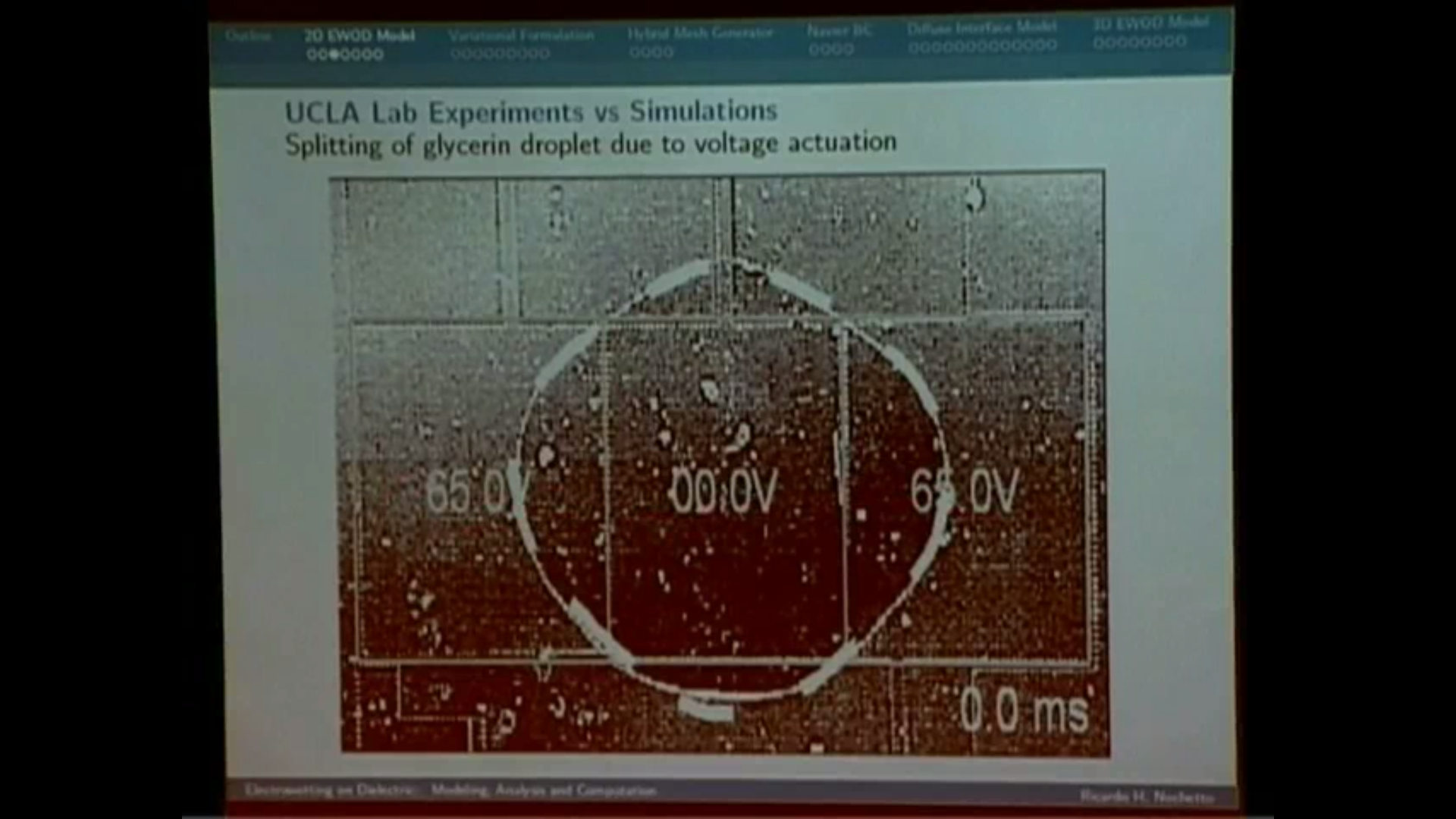Electrowetting on Dielectric: Modeling, Analysis and Computation
Presenter
March 10, 2011
Keywords:
- microbiology
- PDEs and biology
- applied PDE
- partial differential equations
- boundary layers and boundary conditions
- numerical PDE schemes
- multiple interacting phases of mattering
MSC:
- 35R35
- 35R37
- 35-xx
- 35Qxx
- 76E25
- 76Wxx
- 74A60
- 74A50
- 74-xx
Abstract
Electrowetting on diode (EWOD) refers to a parallel-plate micro-device that moves fluid droplets through electrically actuated surface tension effects. These devices have potential applications in biomedical "lab-on-a-chip" devices (automated DNA testing, cell separation) and controlled micro-fluidic transport (e.g. mixing and concentration control).
We present two models that account for several physical effects. We first model the fluid dynamics using Hele-Shaw type equations (in 2D) with a focus on including the relevant boundary phenomena, such as viscous damping and contact line pinning (sticking of the interface). The latter leads to a variational inequality on the liquid-gas interface. We analyze this approach, present simulations, and compare them to experimental videos of EWOD driven droplets exhibiting pinching and merging events.
We also discuss a diffuse interface 3d model for incompressible two-phase flows with moving contact lines. The latter are governed by a generalized Navier-boundary condition. We show that the fully discrete scheme, based on fractional time stepping, satisfies an energy law, and we document its performance with several simulations.
This is joint work with S. Walker, A. Bonito, B. Shapiro, and A. Salgado.
